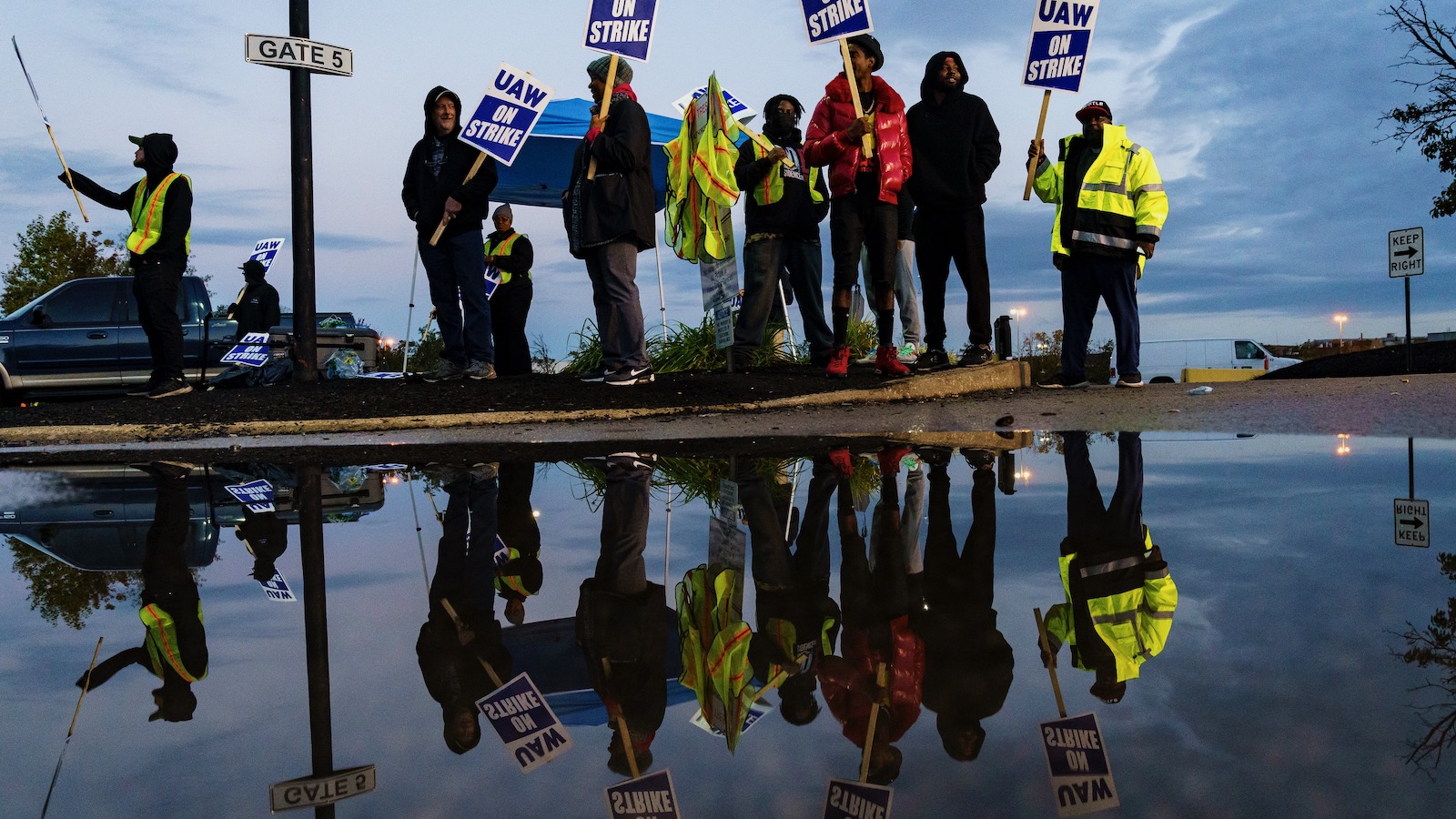Members of the United Auto Workers have overwhelmingly approved a contract that will deliver higher wages, assure them of a role in the EV transition, and possibly lead toward greater unionization of the auto sector. With all of the benefits the pact provides, tens of thousands of people will immediately see their pay rise more than 40 percent, the union said.
The union’s ratification of the pact, by a margin of 64 percent, with Ford, General Motors, and Stellantis followed a two-month strike. Though the electric vehicle transition was never an explicit part of bargaining, it ran as a simultaneously tense and hopeful undercurrent through the walkouts, pickets, and negotiations. This contract, analysts say, will allow the union’s 150,000 members to maintain their quality of life as the nation decarbonizes the transportation sector.
“Those are all huge wins,” said Albert Wheaton, director of the Cornell Institute for Labor Studies. “The biggest wins by far have been for the lower paid workers.”
Under the contract, the base wage paid to workers will increase 25 percent, while the top wage will climb 33 percent. It also provides cost-of-living adjustments and eliminates the two-tiered wage system that saw new hires permanently earn lower wages than veterans. Temporary workers will see their pay jump 150 percent, and the pact cuts from eight to three the number of years required to reach the top pay level.
The agreement with Stellantis also provides for the reopening of a plant that the automaker had planned to close in Belvidere, Illinois, and will add 1,000 jobs at an EV battery plant in the same town.
Workers at Ford and Stellantis overwhelmingly supported the contract; the margin was tighter at GM at just 55 percent, according to Reuters and the Washington Post. The union had already secured an agreement with GM to include new EV and battery factories in the contract; similar victories were seen with Stellantis, Labor Notes reported, though the union’s win was less pronounced at Ford, where two current EV plants are included in the deal, but all future ventures will have to be organized by UAW separately.
Union president Shawn Fein promised on Monday to bring the fight to other automakers.
“The Stand Up Strike was just the beginning,” he said in a statement. “The UAW is back to setting the standard. Now, we take our strike muscle and our fighting spirit to the rest of the industries we represent, and to millions of nonunion workers ready to stand up and fight for a better way of life.”
The strike has already improved conditions at other automakers. Even as the UAW announced its win, Toyota factories in Kentucky and Alabama — a major player in the EV space — had already raised their base wage to $28 per hour. A nascent, not-yet-public union drive has started at Tesla, a notorious union-buster. Hyundai, which operates electric vehicle battery plants in the South, has said it will raise factory pay beginning next year.
Almost as soon as the contracts were announced on October 31, automakers expressed concern about their impact on EV production and sales. The workers’ gains, analysts warned, could hobble the nascent transition by increasing costs or impacting the speed with which manufacturers could produce the cars. Ford, for example, has estimated the new contract will add $850 to $900 in labor costs per vehicle, according to Reuters. In the weeks since the UAW and Detroit automakers announced the contracts, there have been increasing signs that the relatively high cost of EVs, coupled with softening demand, could slow the transition.
“The auto industry has always been cyclical,” Wheaton said. With new technologies and safety laws, the industry ebbs and flows.
Wheaton said the contracts may provide workers with greater security, particularly the provision that allows them to strike over plant closures, while also allowing union shops to transition from internal combustion vehicles to electrics in a controlled way.
“It helps stabilize those existing plants by saying, ‘No, we make parts for both gas and electric cars,’” Wheaton said, rather than opening separate factories in an economy that may not fully support them yet. With the elimination of wage tiers, workers at idled plants will also be able to move more easily to other locations without a huge decrease in pay, he said.
Mijin Cha, an assistant professor of social sciences at the University of California, Santa Cruz, sees the strike as the vanguard of labor fights that will characterize the transition away from fossil fuels. She says characterizing the UAW’s win, and any that may follow, in a “jobs versus environment” framework would be a mistake. Policies like the Inflation Reduction Act, while groundbreaking, often benefit private sector companies, not workers, and it isn’t labor, but fossil fuel producers and other entrenched industries, that hampers efforts to decarbonize.
“The greed of the fossil fuel industry is what’s stopping the energy transition,” she said, “not the fact that people want to make a decent wage.”




